Angel Shark (genus squatina) is one of the most beautiful creatures in the ocean- but it’s also one of the most endangered. With a gentle nature and curious demeanor, these shark species are quickly disappearing from our oceans. Learn more about this amazing creature and find out how you can help preserve it.
- Status: Critically endangered
- Known as: Angel Shark, Angelshark
- Estimated numbers left in the wild: Likely several thousand, but extinct over most of its former range and reduced to a rare remnant even where it survives.
They are among the deepest dwelling sharks on Earth, with some individuals found at depths exceeding 4000 meters.
They have adapted to life in these extreme environments by developing slow metabolisms that require less oxygen than other sharks to survive. These shark species are also known for their unusual morphology; they have no pelvic fins or barrels (whiskers), which makes them distinctive from other shark species.
Description
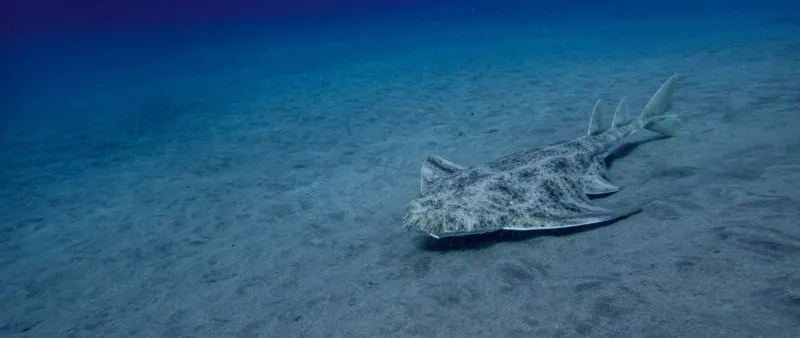
It is an ambush predator, burying itself in sand or mud and leaving nothing but its eyes above the surface, much like a huge stingray. When its quarry swims past within range, the shark bursts from its cover to kill and devour the startled sea creature.
They have a number of predators, chief among them are the Great White Shark and the Hammerhead Shark. Other predators include the Killer Whale, the Tiger Shark, and the Bull Shark. These sharks prey on this endangered species for food, or as part of their natural behavior.
Anatomy and Appearance
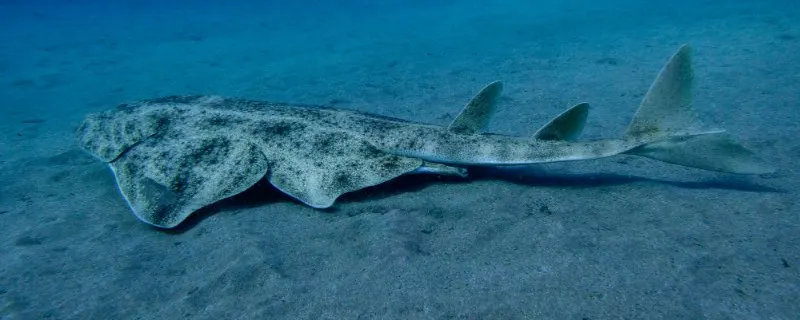
Fascinatingly similar to many rays and stingrays, the angel shark is an actual shark adapted to lurking on the bottom in soft sand or mud. Male measure 1.8 meters, while females are larger at 2.4 meters.
These sharks can reach a weight of 80 kilograms, though most individuals are smaller.
They have wide and flat bodies, with large pectoral fins extending out on either side and large eyes positioned atop the head rather than on its sides, giving a wide field of view.
The belly is white, while the upper surface varies considerably, from grey to dull brick red to greenish-brown, almost always with many small white speckles for camouflage in the sand.
They have small but sharp teeth, adapted to smaller types of prey. Though their bite is painful, it is nowhere near as damaging to a human as larger sharks and is used only in self-defense. They swim freely at night – it only lurks in an ambush during the daylight hours.
Species
There are three species of Angel Shark: the Basking, the Japanese, and the White Angel Shark.
Location
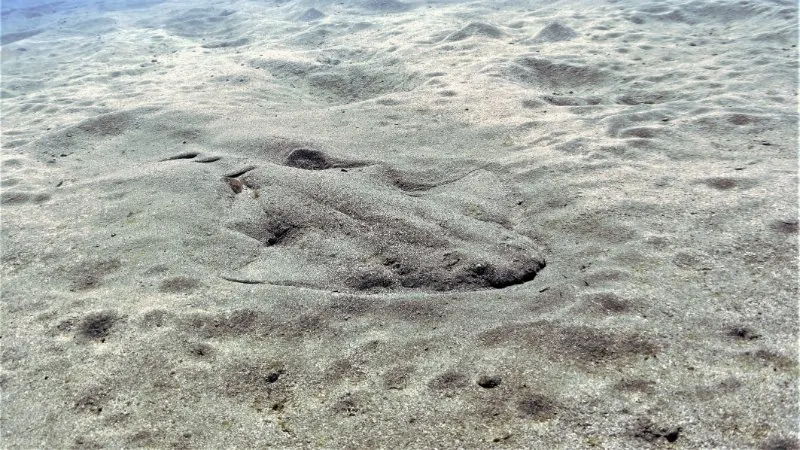
The angel shark’s range is much diminished from its previous extent, and the species is now confined to the Northeast Atlantic Ocean and the Canary Islands rather than extending down to the Mediterranean Sea as it once did.
These shark species live on the continental shelf with soft sand and mud on the bottom and are seldom found at depths greater than 150 meters. These sharks sometimes enter brackish estuarine environments.
Angel Shark Habitat
It is a type of shark that is a bottom-dwelling fish that can be found in both the Northeast Atlantic and Pacific oceans. They prefer to live in murky, shallow waters near coral reefs and seagrass beds. They are a nocturnal predator and use their keen sense of smell to find prey hiding in the sand.
Angel Shark Diet and Nutrition
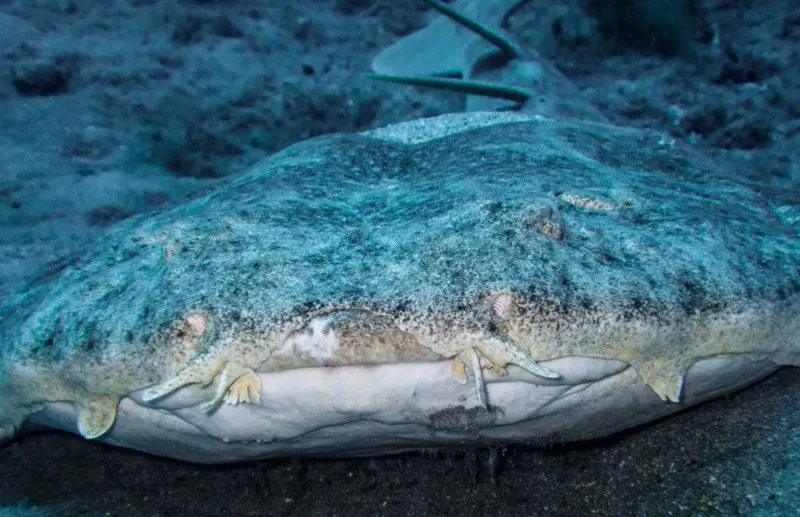
These sharks are carnivorous fish that typically feeds on bony fish, mollusks, crustaceans, and occasionally on other sharks. This species has a specially adapted jaw that allows it to easily crush the shells of its prey.
They are also known to eat seagrass- a type of plant that grows in the ocean. gets most of the nutrients it needs from its diet. However, these shark species can also absorb nutrients from the water in which it lives.
Typical prey includes skates and flatfishes swimming by squid and cuttlefish, the occasional sea bird, or crabs skittering over the surface of the sand or mud.
See Related: Is a Fish an Animal? Here’s What You Need to Know
Angel Shark Mating Habits
This species is a fascinating creature with an interesting mating ritual. These shark species are monogamous species, and the male and female will typically stay together for life. After finding a mate, the male will start to court her by performing a dance. He will also nip at her fins to show his affection. If she accepts him, the two will then mate for life.
Like many sharks, these endangered species of sharks give birth to live young, which is accomplished by an adaptation allowing the eggs to hatch inside the mother rather than after being laid.
The pups are born 20 to 30 centimeters long and may number up to two dozen if their mother is a large female. Gestation is approximately 10 months, though this, and other details of the shark’s life cycle, are still unclear due to its extreme rarity and the difficulty of proper scientific study to get the shark’s ecological and population data.
Role in the Ecosystems
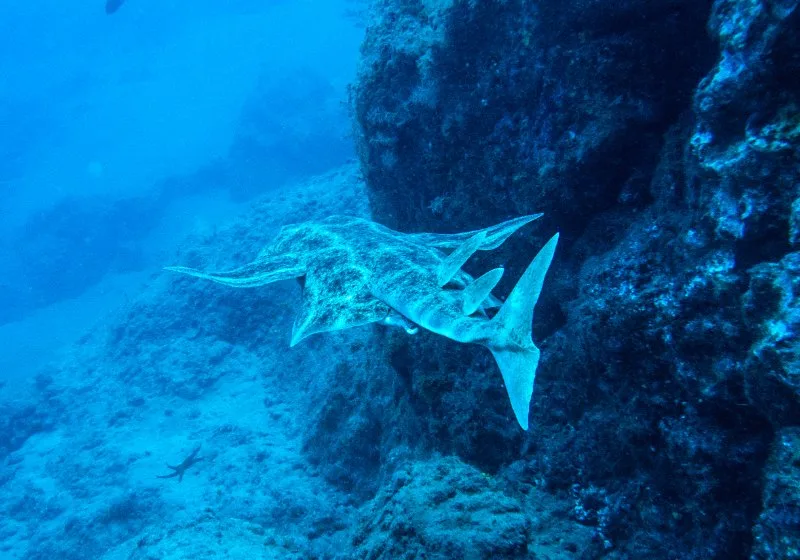
The Pacific Angel Shark is an important part of the ecosystem. They help keep the population of other fish in check and play a crucial role in the food chain. they are also a scavenger, which means they eat dead or decaying animals. This helps keep the ocean clean and healthy.
If they were to go extinct, it would have a devastating impact on the ocean ecosystems. These sharks are an important predator in the ocean food chain, and their disappearance would cause a ripple effect that would disrupt the delicate balance of the marine ecosystem.
They eat small fish and crustaceans, which in turn keep populations of these prey animals in check. Without this species to keep them in check, these populations would explode, resulting in widespread ecological imbalance.
Relationship With Humans
Unfortunately, humans are a big part of the problem. They are often caught and killed for food. They are also often caught in fishing nets and other gear. they are also threatened by habitat loss.
Angel Shark Facts
Here are some of the interesting facts about these shark species
- These species are a type of shark that has a very gentle nature and is quite curious.
- They can grow up to 5 feet long and can weigh up to 100 pounds. A
- They usually live in the shallow waters of the ocean and prefer to stay near the bottom.
- They are mostly nocturnal and feed on small fish, crustaceans, and other invertebrates.
- They are ovoviviparous, meaning that the eggs hatch inside the mother’s body, and the babies are born live.
Conservation Status
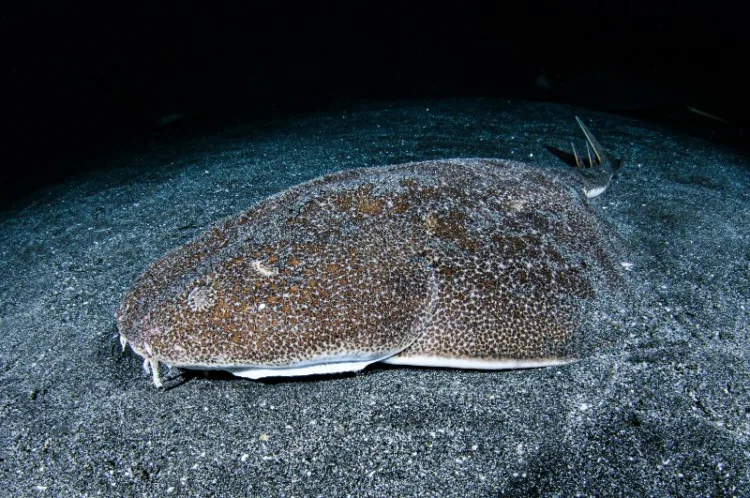
Angel Shark is a beautiful creature that is quickly disappearing from our oceans. They are listed as critically endangered on the IUCN Red List of Threatened Species, which means that it is at a high risk of extinction in the wild.
These shark species are threatened by overfishing and habitat loss. They is slow to mature and reproduce, so it is very susceptible to being overfished. Habitat loss is also a major threat to the shark, as they rely on coastal habitats for survival.
Threats
Angel sharks have been decimated by the use of trawling nets, which are dragged over the bottom of the ocean and thus scoop up these ambush predators as by-catch.
This factor alone is enough to threaten the species with extinction and is likely responsible for wiping it out in the Mediterranean and much of the North Sea.
Some fishing occurs for food or for the oil that can be extracted from the shark, but this occurs at a low level and would not be a hazard to the shark’s survival without the main threat of the by-catch problem.
Some of the primary threats to the shark include:
- Commercial fishing
- Habitat loss
- Pollution
- Climate change
If we want to ensure the survival of the species, we need to take steps to protect their habitat and reduce the threats they face. You can help by supporting organizations that are working to protect this species, and by educating others about the importance of Angel Shark conservation.
See Related: Animals that Start with X
Conservation efforts
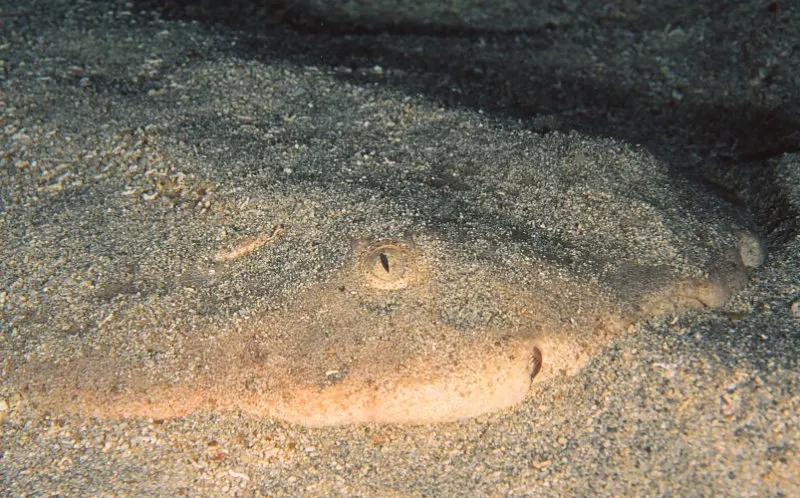
Conservation efforts for the angel shark are more like well-meaning but futile gestures than practical, useful plans. For example, it is fully protected in the Balearic Islands, which have been extinct for decades. Other protection plans are similarly absurd.
The only potentially useful action regarding this shark species is a captive breeding program at Deep Sea World in Britain – it is small thus far but successful and may someday help with reintroduction.
There are many great conservation efforts underway to save Angel Shark. Some of the most successful include:
- Establishing sanctuaries
- Regulating fishing practices
- Educating people and local communities about the importance of shark conservation
See Related: Dusky Shark
Organizations
Do you know of or are you a part of an organization that works to conserve the Angel Shark? Then please contact us to have it featured on Our Endangered World.
Final Thoughts
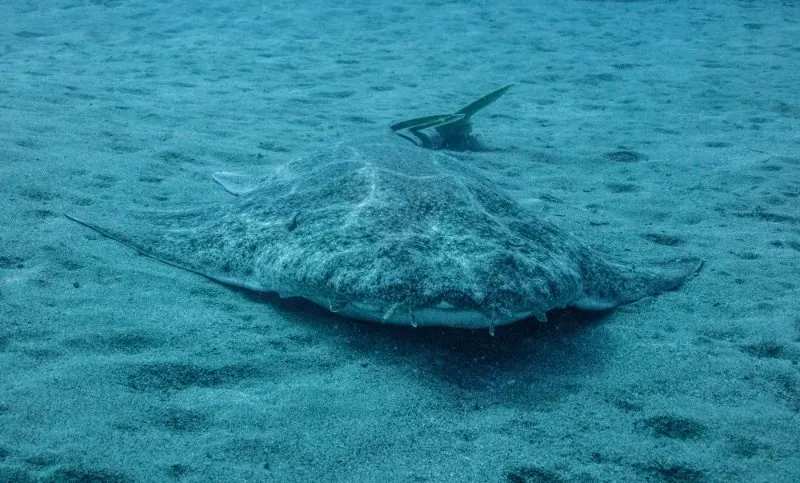
Angel Shark is one of the most beautiful creatures in the ocean- but it’s also one of the most endangered. They are often caught accidentally by fishermen targeting other species and hunting for their flesh and fins, which are used in shark fin soup.
These shark species have been decimated by fishing practices such as trawling nets, which scoop up these ambush predators as bycatch. They are listed as “Critically Endangered” on the IUCN Red List, facing an extremely high risk of extinction in the wild in the near future.
There are many reasons why these sharks are endangered, but the main threat to their survival is fishing. Shark conservation efforts are out-weighed by their extinction risks from fishing, the main threat to these sharks’ survival.
See Related: How Do Shark Help The Ecosystem
FAQ
What is Angel Shark?
A type of fish that is classified as endangered. They are mainly found in the eastern Pacific and Atlantic Oceans. Angel Sharks are usually a reddish-brown color with faint markings along their body.
What does Angel Shark eat?
Angel Shark is a fish that mostly eats crustaceans and other smaller fish. They are can be found in the North and Eastern Atlantic Ocean and the Mediterranean Sea, roaming around at the bottom of deep waters.
How big is Angel Shark?
At Angel Shark breeding grounds, scientists have observed sharks up to 3 meters (10 feet) long and weighing 450 kilograms (990 pounds) with females larger than males. In the northern and eastern Atlantic oceans, these shark species are small as 25 centimeters (10 inches) in length can be found.
Where do Angel Sharks live?
Angel Sharks live in the North Pacific, East Pacific, and south of Baja California. They are found in deep water, out to around 200 meters (656 feet), but young sharks swim nearer to the surface at first.
They inhabit subtropical areas, usually nearshore regions over rocky or sandy bottoms that offer plenty of holes or crevices where they can hide during daytime hours.
What are the threats to Angel Sharks?
Angel Sharks are threatened by a variety of things, including habitat destruction, fishing, and poaching. They are slow-moving fish, making them an easy target for fishermen.
They are also hunted for their fins, which are used in shark fin soup. Habitat destruction is another major threat to these sharks. Coastal development and pollution have led to the loss of many of their traditional habitats.
Do angel sharks attack humans?
Angel sharks are not known to attack humans. These sharks have a very mild disposition that is largely characterized by curiosity and gentleness, making them unfit fighters.
They are best known for two impressive feats:
a) being able to breathe while their heart is beating out of water;
b) can change colors in order to camouflage themselves when needed.
Is the angel shark rare?
Angel Sharks are not uncommon by any means, but they are very hard to find due to their shy nature and usually residing at depth with most living more than 400 feet below the surface.
They are an animal that is near threatened based on where they can be located here in North America – with this being said there is still hope as the numbers of them seem to be slowly rising over time.
These sharks have a low population density with wide-ranging geographic distribution. They are often found in deep water, with most only coming to the surface for feeding or reproduction purposes.
How can I help Angel Sharks?
Angel sharks are endangered for many reasons, but one of the main threats to their survival is fishing. They are often caught accidentally by fishermen targeting other fish, and they often die after being caught.
There are several things you can do to help Angel Sharks:
– Learn more about Angel Sharks and spread the word about how amazing they are!
– Campaign against destructive fishing practices that kill these shark species accidentally.
– Support organizations that are working to protect sharks and their habitats.
Other Species Profile
Related Resources
